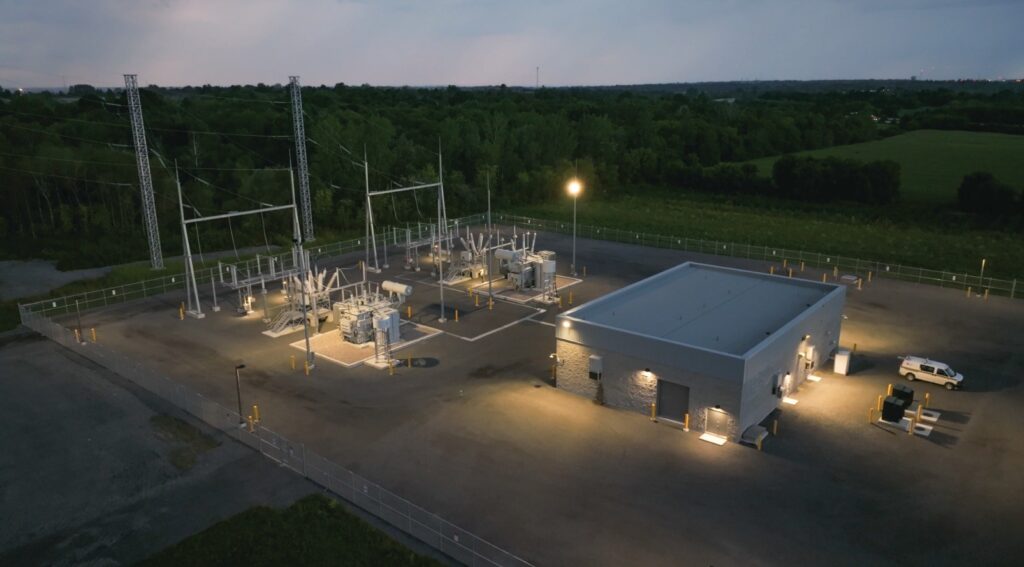Investing in Ottawa’s Energy Future

OTTAWA IS A CITY of opportunity, transformation, and resilience. The energy transition, with its imperative shift towards sustainable practices, is a prime example of where Ottawa can, and will, excel. Tackling the energy transition presents unique challenges as well as opportunities for growth and innovation, and Hydro Ottawa is seizing them with unwavering determination. The utility is not just adapting to the transition; its actively shaping it, leading the charge towards a more sustainable future for our National Capital Region.
However, the path of change is rarely predictable. The energy transition is happening on a massive scale, creating rapid and unexpected shifts in the energy landscape. This requires agility and foresight as we navigate a future that’s evolving faster than anyone could have imagined.
The future of energy in a growing city
A common misconception surrounding the energy transition is that the focus is on reducing our reliance on fossil fuels. And while this certainly is a key focus for Hydro Ottawa and other utilities across the world, the energy transition represents a broader set of challenges we have to solve.
“The energy transition is not just an environmental necessity; it’s an economic opportunity,” says Bryce Conrad, President and CEO of Hydro Ottawa. “We are committed to building a modern, resilient grid that will attract investment, create jobs, and enhance our community’s quality of life.”
The National Capital Region’s population is growing, and the demand for electricity is growing alongside it. In order to accommodate the increased demand, Hydro Ottawa needs to expand its infrastructure to ensure Ottawans have access to the power they rely on for their everyday needs. As more people consider buying an electric vehicle and retrofitting their homes to become more reliant on electricity, the need for a steady, abundant supply of clean energy is critical.

First energized in 2022, Cambrian is Hydro Ottawa’s largest station powering 32,000 homes annually. Hydro Ottawa is on track to energize a new substation every year until 2030
Meeting the energy demands of a digital world
Our increasingly digital world is another key factor contributing to escalating energy demands. Data centres, generative AI, and the ever growing digital landscape are having a seismic impact on how energy is consumed. For example, a single Chat GPT search consumes ten times the energy that a traditional Google search typically uses. To take this further, the NVIDIA chipsets that most generative AI applications use run at a temperature of 178 degrees fahrenheit. Now imagine a data centre full of these chipsets and the cooling required to keep them functioning properly. These are staggering energy demands, and as this area of technology continues to advance, so will its reliance on power.
In order to meet these demands, the infrastructure that took more than 100 years to build will need to almost double in size within the next 25 years. To put that into perspective, Hydro Ottawa once built a new substation every five to seven years. Now, the utility is on track to energize a new station nearly every year until 2030.
The energy transition requires a substantial investment in electricity distribution. This, combined with evolving policies at both the federal and provincial levels, underscores the need for government funding. Distributors are essential for delivering electricity to consumers, and supporting them will ensure the public benefits associated with this transition.
Investing in a smarter, more resilient grid
Increasing the grid’s capacity is critical. But what’s equally as important is the need to invest in creating a smarter, modernized, more resilient grid.
“We are on the cusp of a historic investment cycle in our electrical infrastructure,” reflects Conrad. “This will not only enhance reliability but also enable the integration of renewable energy sources and empower customers to actively participate in energy management.”
Imagine a grid that is not just smart, but intelligent, capable of self-healing and adapting to changing conditions. While we face more frequent severe weather events, having a modern grid with these capabilities will be critical to fostering economic growth. Simply put, the investment burden is too heavy to place on ratepayers alone— utilities need support.
Forging the path ahead, together
The energy transition is not merely a technological shift; it’s a societal transformation that requires a collective effort.
“We need continued support to ensure this critical infrastructure is readily available,” emphasizes Conrad. “This will allow us to meet the growing energy demands of our community and maintain Ottawa’s position as a leader in the green energy transition.”
Ottawa’s energy future is bright, and Hydro Ottawa, is proud to be leading the charge across the National Capital Region. But the utility can’t do it alone. The company invites everyone to be a part of the journey toward a more sustainable future. Whether it’s adopting energy-efficient practices at home or embracing innovative solutions for your business, every action contributes to a brighter, greener tomorrow for all. Let’s build a smart energy future together.























